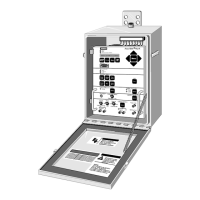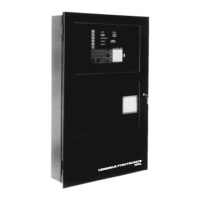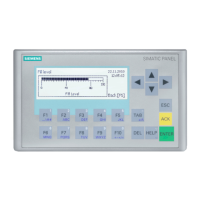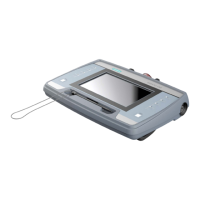Introduction
Siemens Industry, Inc. 1
1 Introduction
The MJ-5(TM) is a next generation Voltage Regulator
Control Panel, which is a member of the Siemens
Accu/Stat® series of digital controls, designed for use with
many regulators and load tap changer models.
Although the MJ-5 Control Panel includes some new
functions, its operational characteristics are similar to those
of earlier-model Accu/Stat MJ-1A, 2A, 3, 3A, 4A, 4B, MJ-
X, and MJ-XL controls. It is electrically and mechanically
interchangeable with these controls.
Voltage Reduction Control, Voltage Limit Control, six
Power Flow modes, and Data Logging are all standard
features of the MJ-5 Control Panel.
In addition to manual and automatic voltage monitoring
and control, the MJ-5 Control Panel also offers full remote
monitoring and control capability. Via a communications
link, a remote operator can monitor operating conditions
and adjust set points or command tap changes—just as if
he/she were locally operating the controls.
When equipped with Communications Module, the MJ-5
Control Panel provides remote communications and
SCADA (Supervisory Control And Data Acquisition)
compatibility. Please refer to the MJ-5 Communications
Module Installation Manual for an in-depth treatment of
the Communications Module.
The regulator control function has two operating modes—
manual and automatic. Remote control can be enabled or
disabled for each of these operating modes. The operating
modes and remote control settings are described in Section
2.5.
Manual control. In Manual mode, the operator
directly controls the regulator tap changer and uses
this mode to enter regulator set points for automatic
control.
Automatic control. In Automatic mode, the
microprocessor controls the regulator tap changer,
based on set points stored in memory.
Remote control. If enabled, this setting permits a
remote operator to change operational values and set
points as well as to monitor operational values. If
disabled, a remote operator can only monitor
operational values.
1.1 About This Manual
This manual is designed to help you become acquainted
with all aspects of the MJ-5 Control Panel. The manual
starts with the operator panel and controls, followed by
physical installation considerations, setup procedures, day-
to-day operations, and finally, troubleshooting. The
Appendices provide further information about MJ-5
Control Panel operation and setup.
1.2 Features of the MJ-5 Control Panel
This section briefly describes the standard MJ-5 Control
Panel features and functions.
Display Panel and Operator Controls
Operator input to the MJ-5 Control Panel is accomplished
through a set of touch-keys. MJ-5 output is presented in
plain text through a four-line sixteen-character
alphanumeric display panel. For status items, such as
Voltage Reduction and Voltage Limit, indicators provide a
quick glance summary of MJ-5 Control Panel operating
conditions.
Metering
The MJ-5 Control Panel maintains and presents operational
data to help you monitor system operation. Instantaneous
and demand values (along with minimum and maximum
for each) are readily available.
Data Logging
The Data Logging function maintains historical data for
subsequent review and analysis. This data can be very
useful in the assessment of load characteristics by time of
day or season; the reconstruction of system problems; and
the improvement of the overall efficiency of the power
distribution system.
Voltage Limit Control
Voltage Limit Control (VLC) automatically maintains
regulator output voltage within preset high and low limits.
Line Drop Compensation
Line Drop Compensation (LDC) models the resistive and
reactive voltage drop of the line. The resulting model is
used by the microprocessor to correct regulator output
voltage for the effects of line drop between the regulator
and the load.
Voltage Reduction Control
Voltage Reduction Control (VRC) reduces output voltage
and can be activated automatically, manually, or remotely.
Reverse Power Flow Detection and Operation
In many systems, power only flows in one direction;
however, in some systems power flow reverses from time
to time. To accommodate power flow reversal, the MJ-5
Control Panel monitors power flow direction and adjusts its
operation accordingly. Six different Power Flow Modes
allow flexibility in selecting a control algorithm which best
matches the power flow needs of the system.
Communications
The MJ-5 panel provides local communications via the
front-panel with both a USB serial port and an SD card,
which can be used for uploading and downloading
configurations. The MJ-5 also supports remote
communications via RS-232, RS-485, or network cable.

